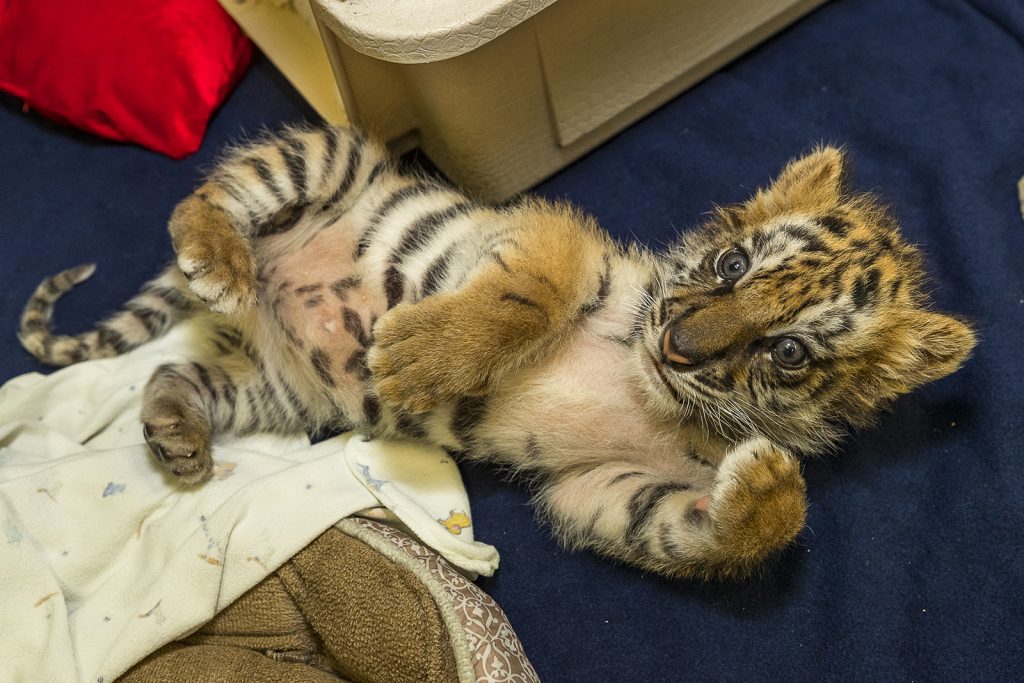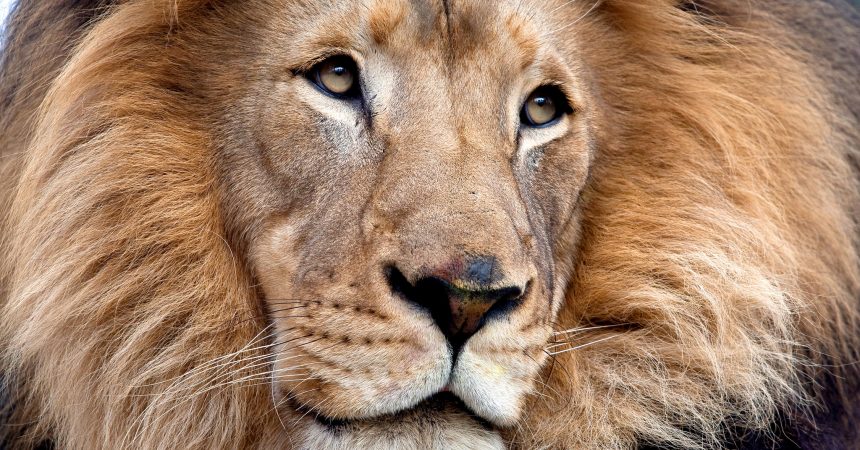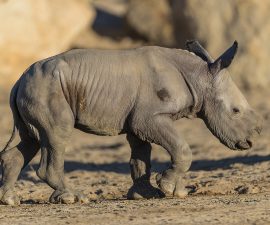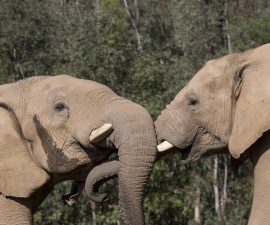Today is World Wildlife Day! On this day that commemorates the signing of the Convention on International Trade in Endangered Species of Wild Fauna and Flora (CITES), we take some time to think about the plight of plants and animals we share this planet with. This year in particular, CITES wants us to consider some of the most well-known, feared, and revered species across the globe: the big cats.

A small male Bengal tiger cub was brought to the Paul Harter Veterinary Hospital at the San Diego Zoo Safari Park on Aug. 23, 2017 by U.S. Fish and Wildlife Service officers, and was placed in the care of veterinary staff. The young tiger had been rescued earlier that day by U.S. Customs and Border Protection officers, who found the cub while inspecting a vehicle that was entering the U.S. from Mexico.
Big cats are charismatic, colorful, and intelligent carnivores found on nearly every continent. High up on the food chain, they generally require large home ranges to meet their energetic requirements. Most big cats are solitary creatures, which helps limit competition for food, though some, like lions, maintain social groups to facilitate cooperative hunting of fast-moving prey. Big cats are a diverse group, ranging from leopards to cheetahs to tigers. They inhabit a wide range of habitats, from open savanna to steamy tropical jungles to frozen mountain forest. Despite this incredible variety of social systems, body types, and habitats, the big cats have one thing in common: they are all at risk of extinction.
Some subspecies of big cat are doing relatively well—such as the Amur tiger, which has rebounded from a low of 20 to 30 animals nearly a century ago to its present numbers of about 360 individuals. Yet most species are in decline, and even the Amur tiger still has a very small population that is vulnerable to many threats. Chief among threats to big cats are habitat loss, human-wildlife conflict, poaching, and wildlife trafficking.
CITES is concerned with ensuring that trade in wild species does not threaten their survival. The big cats are largely protected under CITES, and trade in live animals or their body parts is typically restricted. However, poaching of wild big cats occurs, increasing pressure on their already small populations. Demand for tiger bone, leopard skin, and cheetah pets are driving these species further toward the precipice of extinction. Recently, the U.S. Fish and Wildlife Service confiscated a tiger cub sold as a pet in Tijuana; that cub has resided at our Safari Park while the legal efforts to prosecute the cub’s trafficker were undertaken.
Illegal trade in wildlife is a threat to many species, and the trade seems to expand continually to fill demand. Everyone is now familiar with the threat to elephants due to the ivory trade; that trade now threatens other animals with body parts that can be utilized in much the same way as ivory: rhinoceros hornbill casques, hippopotamus teeth, and walrus tusks are also carved and sold in the trade. For big cats, similar effects have been seen. For example, crackdowns on tiger bone trade have resulted in increasing threats to lions. Today, we ask everyone to think about how our behavior might contribute to threats to big cats, and consider ways to ensure their survival into the future.
Because who could imagine a future without lions on the savanna, or tigers in the forest, or leopards in the trees?
Suzanne Hall is a Conservation Policy Specialist with Global Partnerships





